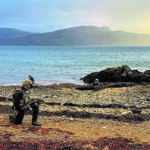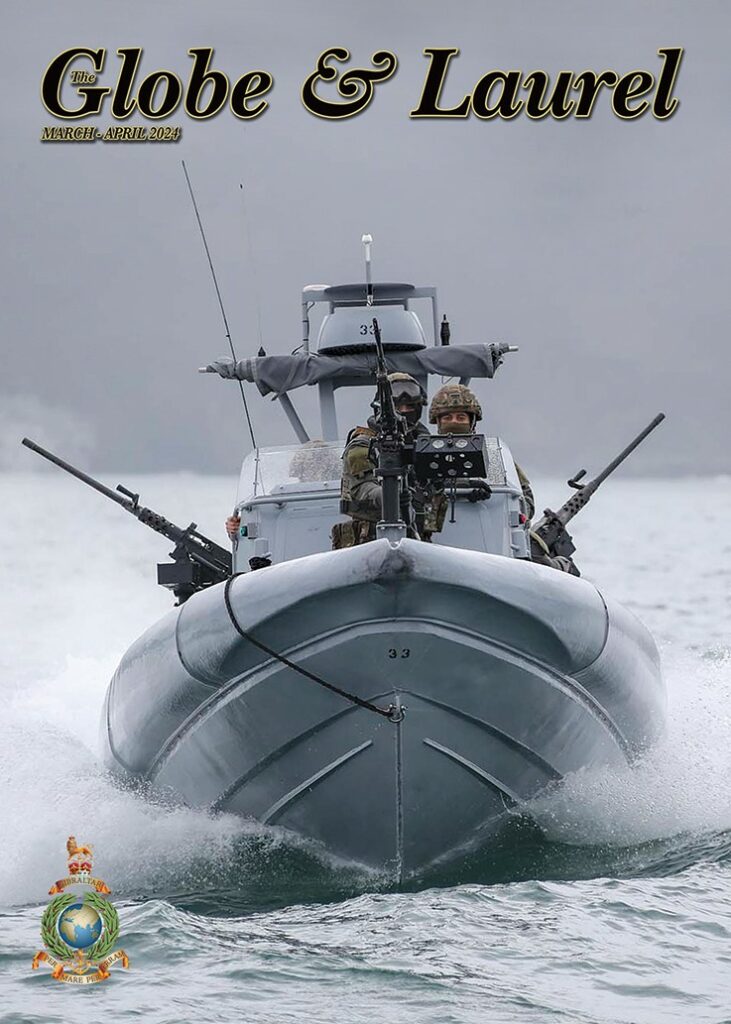Littoral Response Group(South)
The following article is taken from the latest issue of the Globe & Laurel magazine.
Click the button below to discover more.

Ushering in the New Year, Shore Reconnaissance Tp (SRT) found themselves stood down from Winter Deployment 24 due to enduring operational commitments. We instead commenced planning and execution of Exercise Black Fish 24, a three-week training exercise, spread across the UK training estate. Balmacara House, on the west coast of Scotland was our initial staging point. This challenging location is often revered by Commandos as an excellent training ground and holds great historical significance for honing the reconnaissance capabilities held within our teams. The exercise began with SRT engaging in a series of basic training serials, covering tasks such as Tactical Beach Reports (TACBEREP) and battlefield casualty drills. As the maritime component of the Surveillance Reconnaissance Squadron (SRS) our focus during the exercise was directed towards beach profiling, harbour reconnaissance reports and establishing SOPs for maritime surface manoeuvre. Notably, one of our primary modes of transportation during the exercise was the new Inflatable Raiding Craft (IRC) Mk4.
Having completed the RM Reconnaissance Operators course, our primary role remains grounded in one for the main functions of traditional Commandos…recce! Our expertise as amphibious infantry was rigorously assessed as we moved over the undulating Scottish terrain to access numerous Littoral Access Points (LAPs). Operating discreetly and in the dead of night to evade detection, we effectively employed advanced surveillance equipment to conduct data collection of exercise areas and targets. We then consolidated the gathered information and developed a variety of informative reconnaissance products. These products were presented to the SRT HQ, allowing for the pertinent collected data to produce an intelligence package. This package furnished first-hand insight on the targets and made recommendations to commanders on how to conduct subsequent missions and tasks. This marked the conclusion of our time in Scotland.

After travelling to Devon, we shifted our focus onto the final phase of the exercise, urban tactics. During this phase, particular emphasis was placed on honing the art of discreetly entering buildings and structures often found in littoral areas. Operating in this environment enables us to gather information on target structures, establish urban observation posts, and monitor targets. Drawing on the expertise imparted by our RM Close Quarter Battle Instructor, our teams exercised the ‘green to grey’ concept, seamlessly transitioning from rural to urban environment.
Finally, we dedicated a day to Troop Insertion Extraction Systems (TIES), commonly referred to as ‘fast-roping’. Through interoperability with the Commando Mobile Air Operations Team (MAOT), SRT ascended the 45ft gantry at HMS Raleigh (which represented a helicopter at height) and conducted numerous descents, starting from the lower levels, then advancing upwards to the top of the gantry. Following the daytime training we transitioned into the night serials. This preparation culminated with SRT conducting ‘live’ descents from a Royal Navy Wildcat operated by 815 Naval Air Squadron at RNAS Yeovilton. This cemented everything we had learnt in the preceding week and rounded off what had proven to be a challenging, yet enjoyable training programme.
To find out more about SRT and 30 Cdo IX Gp RM’s activities, catch up regularly with all the news in the Globe & Laurel Magazine, the Journal of the Royal Marines.
Read more from the Journal of the Royal Marines
For more information, and to read similar stories, visit:
Globe & Laurel – RMA – The Royal Marines Charity (rma-trmc.org)
